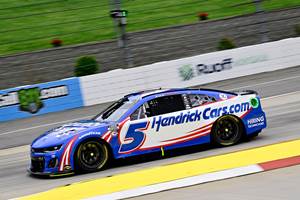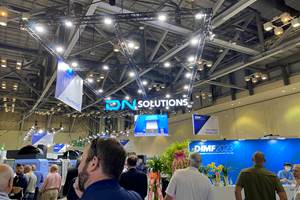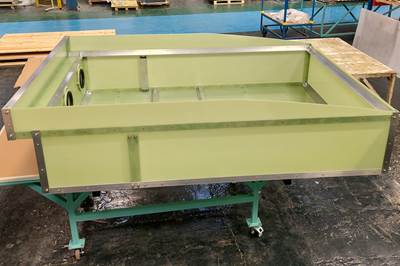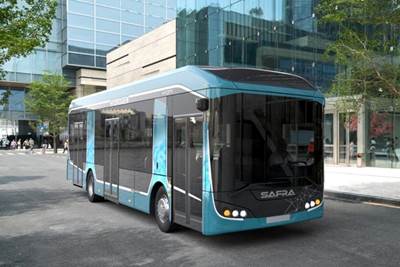Classic Citroën vans reimagined using composites, AOC resins
Caselani Srl, with support from AOC Resins and designer David Obendorfer, retrofits close to 400 vans/year to meet modern needs and comfort for Type H car enthusiasts.
Share

.png;maxWidth=45)
DMG MORI - Cincinnati
Featured Content
View More

Autodesk, Inc.
Featured Content
View More

Takumi USA
Featured Content
View More


Citroën Type H enthusiasts around the world are now able to recreate the distinctive exterior styling of this versatile van, thanks to composite body kits manufactured by Caselani Srl (Sospiro, Italy) with AOC Resins (Schaffhausen, Switzerland).
The Citroën Type H, created by influential Italian designer Flaminio Bertoni, enjoyed a long production run. More than 470,000 units were manufactured from its introduction in 1947 until it was succeeded by the C25 in 1981. Corrugated metal body panels were a key feature of the van’s distinctive “industrial” design. The simple, economically priced commercial vehicle proved successful in a variety of applications — food truck conversions, in particular, became a familiar sight.
An original Type H in good condition is difficult to find today. Caselani Srl, however, has a solution for those attracted to the retro look of the classic van but needing the performance, comfort and reliability of a modern vehicle. The Italian company is modifying vehicles in the Citroën Jumper range into retro style “Type H” vans using glass fiber-reinforced polymer (GRP) composite body panels manufactured using AOC resins.
Going retro
The Caselani Type H project is a collaboration between the company’s CEO, Fabrizio Caselani, and designer David Obendorfer, who share a passion for classic vehicles. Caselani has worked in the marine industry for many years as a supplier of composite materials and accessories for luxury yacht brands, and he collects vintage Citroën cars. Obendorfer, a yacht designer, has created a series of modern reinterpretations of iconic car models.
The idea for the “new” van came about when Caselani planned to tour Europe with his family in an original Type H, but found that there was not enough space. He decided to create a camper van in Type H style based on an existing Citroën vehicle. While traveling, he posted a video of his retro van online, which immediately went viral. Citroën was also enthusiastic about the initiative and ordered 100 vans for a limited-edition series to celebrate the Type H’s 70th anniversary.
As the response to this anniversary edition exceeded expectations and demand from customers grew, Caselani began retrofitting vans with body kits in 2018, and the business subsequently expanded into manufacturing kits to sell to remodeling fanatics.
Manufactured under license from Citroën, Caselani now ships custom-made vans and kits globally. Variants with different deck lengths, roof heights and colors are available, for applications ranging from panel van, minibus, camper van and tow truck, to the ever-popular food truck. Caselani also offers conversions and kits for the Type H’s “little brother” the HG, which went into production in 2019.
Handcrafted with composites
Caselani carries out all the work at its plant in Sospiro, Italy. The company manages all stages of the project, from design and prototyping to creation of molds, manufacture of the composite parts and painting. Skilled employees guarantee high-quality, detailed work, enabling customers to customize their vehicle to their precise requirements.
In the conversion process some of the original parts are removed, others added and some remodeled. A complete kit consists of about 20 different composite parts, which are glued onto the original bodywork using polyurethanes glue mixtures. Then they are sealed to prevent the entry of air and/or water. Other components, such as the front end, are completely replaced.
AOC has been a long-standing supplier to Caselani and collaborates closely with the company to optimize its processes and enable the manufacture of parts which meet its exacting quality standards. One challenge which AOC helped Caselani to overcome concerned body panels painted in dark brown and black. These need to have a high heat resistance so they can survive the hot summers in Southern Europe without deformation.
The composite body panels are mostly manufactured via hand layup processes using AOC’s Synolite 8388-I-1 and Atlac E-Nova MA 6325 resins. Synolite 8388-I-1 is a versatile DCPD resin for hand layup and spray-up processes with low styrene emission. The low shrinkage of this resin enables the manufacture of components with high surface quality. Atlac E-Nova MA 6325 is a low styrene unsaturated polyester resin, used in particular for the dark colors, providing high strength and dimensional stability at elevated temperatures.
Fabrizio Caselani is now converting approximately 400 vans per year, with several new models in the pipeline. AOC is offering its technical support and advice to help the company further increase manufacturing output. With AOC’s support, Caselani says it can be confident that even more customers will be enjoying the experience of driving a Type H soon.
Related Content
Sunnen Products Company Partners With Hendrick Motorsports
The partnership puts the new Sunnen SV-series honing machine in the Hendrick Motorsports engine operation alongside other Sunnen honing and engine building machines.
Read More4 Steps to a Cobot Culture: How Thyssenkrupp Bilstein Has Answered Staffing Shortages With Economical Automation
Safe, economical automation using collaborative robots can transform a manufacturing facility and overcome staffing shortfalls, but it takes additional investment and a systemized approach to automation in order to realize this change.
Read MoreThe Role of Surface Finishing in Modern Manufacturing: Trends and Best Practices
You’re attending IMTS to advance your business. Regardless of your role in the manufacturing process, considering how your parts will be finished is crucial. This article can help you understand trends in surface finishing and better communicate with your finishing partners.
Read MoreDN Solutions Responds to Labor Shortages, Reshoring, the Automotive Industry and More
At its first in-person DIMF since 2019, DN Solutions showcased a range of new technologies, from automation to machine tools to software. President WJ Kim explains how these products are responses to changes within the company and the manufacturing industry as a whole.
Read MoreRead Next
NCC develops composite structural systems for bus fuel cell retrofits
Glass fiber storage structure increases energy storage density by 28%, meets cost and weight targets and ultimately enables a rapid retrofit of U.K. commercial buses, with potential for larger vehicles.
Read MorePlastic Omnium supports development of Safra Hycity hydrogen-powered buses
Passenger transportation retrofit specialist will receive Plastic Omnium’s Type IV high-pressure hydrogen vessels, fuel cell systems, and technical and product launch support.
Read More5 Rules of Thumb for Buying CNC Machine Tools
Use these tips to carefully plan your machine tool purchases and to avoid regretting your decision later.
Read More





















.png;maxWidth=150)




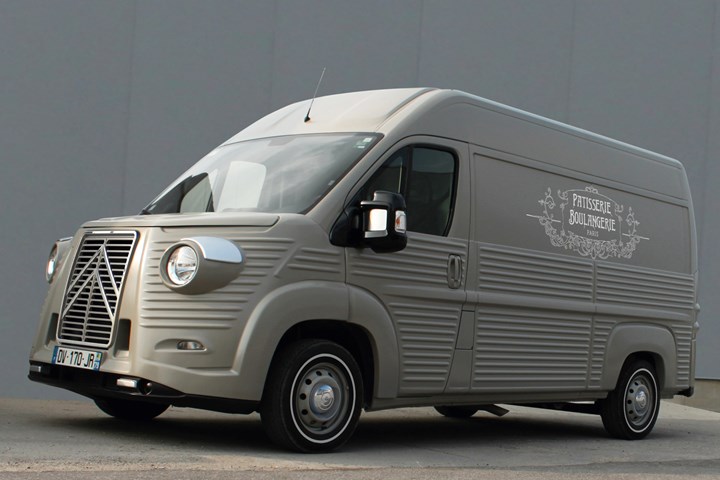



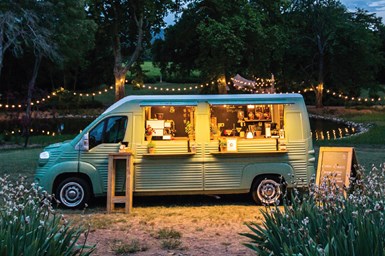







.jpg;maxWidth=300;quality=90)




